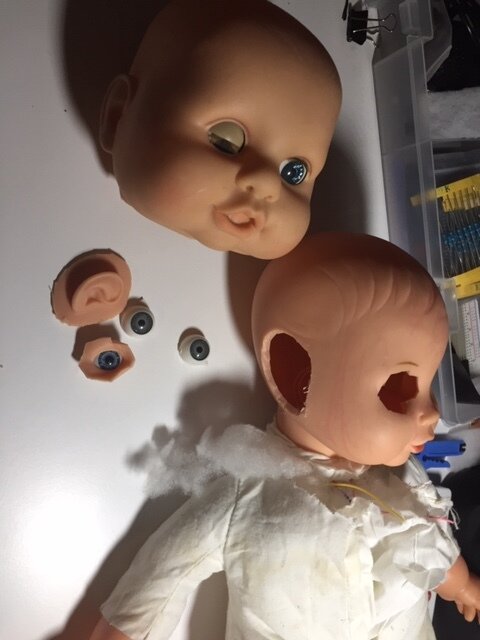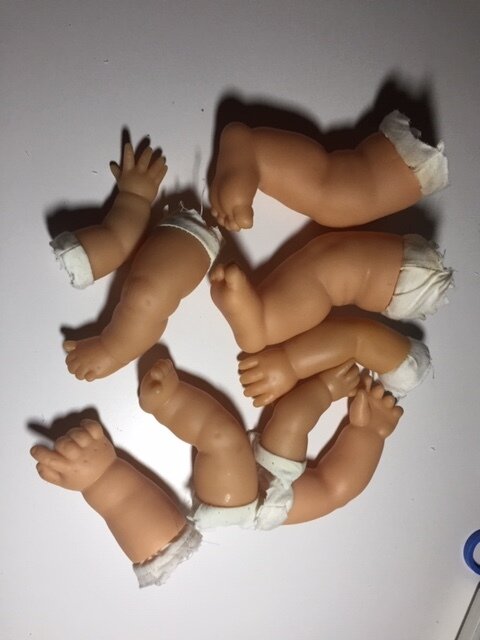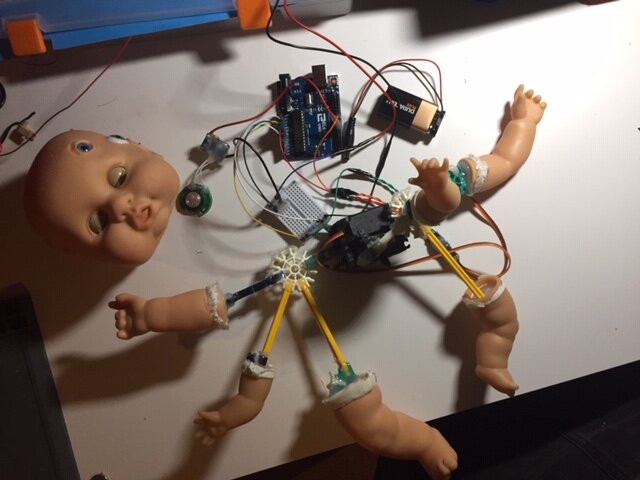Safety meme
A physical meme that acts as an informative object for humans of the future; a human interacts with a mechanical object, the object reacts and communicates valuable information to the human.
It’s my intention that in a speculative future, a person familiar with the Physical Meme, upon discovering a piece of information that needs to be communicated, will build a version of this object, as an act of altruism, to share that information with others.
My monster baby warns humans of the future of nuclear waste nearby; a pressure sensor activates movement and sound that warns you to stay away.
I propose a new use for memes; to inform. Memes don’t just have to be for humour, or derision, or capitalist endeavours. They can be used but to inform, for altruism. They can evolve, and spill over from the web to the real world. Together we can imagine new possibilities.
I have made an example of a Physical Meme - a “Safety Meme”, as a pilot project, communicating the dangers of nuclear waste.
Nuclear waste will remain radioactive for thousands of years. Humans in the future will need to be warned of the danger of the nuclear waste we produce now. Semantics and symbols we use now will not carry the same meaning in the future, so we need to come up with a warning symbol (a mutated baby) that will be relevant in years to come and a vehicle that allows for the symbol to be reproduced (the virality of memes).
Nuclear semiotics is a fascinating practice that attempts to imagine what interventions we produce in the present would be useful in warning people in the distant future of the dangers of nuclear waste. Attempts at this include an atomic priesthood, breeding cats that change color when near radiation and the notion that “this place is not a place of honour”.
It’s unlikely that any warning system that appeals to a person’s sense of reason will be effective – people routinely trespass and excavate where they know they shouldn’t. Tomb raiders ignore curses and there’s a campaign trying to convince young people that live train lines are actually dangerous.
This pilot project proposed that it would be more effective to evoke discomfort and disgust, as these emotions are universal, and not attached to a specific culture or a particular language system.
I wanted to appeal to people’s sense of the absurd, as something that is unusual is more viable as meme, and will more likely live on in people’s imaginations, not needing to be tethered to cultural context or a point in time. The aesthetic of Tim Hunkin’s “Novelty Automation” machines elegantly demonstrates that machines can function and convey meaning without needing to be mechanically complex. I wanted to retain an element of humour, to be disarming and engaging without requiring much intellectual labour of an audience.
I assembled a mechanical sculpture that can be re-assembled by anyone, without knowledge of electronics, using easily available, scavenged materials at little or no cost. I wanted to offer the idea that participating in a practical sense in technological practice is for everyone.
Working philosophy / a list of proposed rules and principles that will guide the development of the project:
- The object should have an innately familiar form.
- The object’s form should alter when activated in order to communicate a piece of information.
- The piece of information should be relevant to humans in their situation and point in time.
- The viral nature of memes could be used to transmit different types of information.
- Memes are currently not used to their full potential.
- Memes can exist offline, as physical objects.
- A meme in the present has the potential to continue to live on online indefinitely.
- An online meme could manifest as an offline, physical object.
- Where possible, use easily available, low cost, second-hand objects and components.
- Where possible, use scavenged materials that will keep their integrity for hundreds or thousands of years.
Safety Meme in the wild!
This project was exhibited at CPDP 2021








